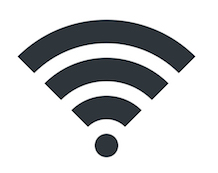Wi-Fi Alliance Announces WPA3, the Successor to Wi-Fi's WPA2 Security Protocol
The Wi-Fi Alliance -- comprising 15 major sponsor members (including Apple, Cisco, Dell, Intel, Microsoft, Qualcomm and more) and hundreds of contributing members -- has announced that WPA3 will be introduced during 2018.
WPA3 is not an immediate replacement for WPA2, which will continue to be maintained and enhanced. In particular, the Alliance will introduce new testing enhancements for WPA2 to reduce the potential for vulnerabilities caused by network misconfigurations; and will further safeguard managed networks with centralized authentication services.
New Wi-Fi Alliance WPA3 certified devices will take some time to filter into widespread use. Use of the new specification will require WPA3 devices and WPA3 routers -- and since the vast majority of home wi-fi users never buy a router but use the one supplied by their ISP, many users won't become WPA3 compatible before they change ISPs. That could take several years.
 Nevertheless,
there are some welcome enhancements over the WP2 specification that has kept users largely, but not entirely, protected for around two decades.
Nevertheless,
there are some welcome enhancements over the WP2 specification that has kept users largely, but not entirely, protected for around two decades.
Four new capabilities for both personal and enterprise networks have been announced. There are no technical details in the Wi-Fi announcement, leading to some conjecture over exactly how they will be introduced.
The first will be to provide "robust protections" even when the user fails to use a strong password. Mathy Vanhoef, the researcher who discovered the KRACK WPA2 vulnerability, has suggested on Twitter, "That means dictionary attacks no longer work. The handshake they're referring to is likely Simultaneous Authentication of Equals (SAE). Which is also called Dragonfly;" adding, "The standards behind WPA3 already existed for a while. But now devices are *required* to support them, otherwise they're won't receive the "WPA3-certified" label."
The second will simplify the process of configuring security on wi-fi devices that have limited or no display interface. The obvious use will be for small personal devices, like wearables such as smart watches -- but it could also play some role in improving the future security of the industrial internet of things.
The third will improve the security of open wi-fi hotspots -- such as cafes, hotels and airport lounges -- by giving each user individualized data encryption. On this, Vanhoef commented, "This might refer to Opportunistic Wireless Encryption: encryption without authentication." It won't make the use of wi-fi hotspots completely secure, but should go some way to reassuring security officers who know that corporate employees work from hotspots while traveling.
The fourth will be a 192-bit security suite aligned with the Commercial National Security Algorithm (CNSA) Suite, that will further protect wi-fi networks with higher security requirements; such as government, defense, and industrial.
We can expect that new WPA3 devices will start to appear over the next few months -- particularly since many of the manufacturers will be members of the Alliance. However, the devices will need wait for the launch of the Wi-Fi Alliance's formal certification process before they can be truly called such. The Wi-Fi Certified designation will be important to reassure buyers.
"Security is a foundation of Wi-Fi Alliance certification programs, and we are excited to introduce new features to the Wi-Fi CERTIFIED family of security solutions," commented Edgar Figueroa, president and CEO of Wi-Fi Alliance. "The Wi-Fi CERTIFIED designation means Wi-Fi devices meet the highest standards for interoperability and security protections."


